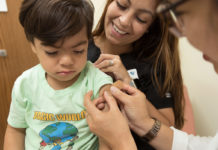When a world crisis of some sort enters everyone’s consciousness, it’s hard to remember that the world keeps turning. As long as people can talk, read, write and view — especially in this day and age — decisions are made. So whether you are hunkered down indoors for the duration or you have found a socially distant outdoor space, it’s worth reviewing some legislation that challenges care for some of our most vulnerable young people: transgender and gender-diverse kids and teens.
You may or may not personally know any children or adolescents who are going through gender identity issues. We’ll get to some numbers shortly, but first a brief, space-permitting discussion of definitions. “Transgender” is an adjective used to describe anyone who identifies with the gender that was not their assigned birth gender.
More recently, we’ve come to appreciate that gender identity can be a continuum — in other words, not just male or female. This has given rise to a few different descriptive terms, including “gender diverse,” “gender binary” and “nonbinary.” Sexual orientation is something quite different. It’s about whom you like rather than what you are.
Now for those numbers. The American Academy of Pediatrics has been on board with this topic for a while. In their policy statement from 2018, they estimate that 0.6% of individuals are either transgender or gender nonbinary. For youth, it’s estimated that 0.7% are transgender; although that figure is potentially higher because gender issues are now being recognized at an earlier age.
But these figures are thought to be lowballing the frequency. This is unfortunate, because transgender youth are at higher risk for a lot of problems. There are higher rates of homelessness and violence (family and otherwise) in this population, and there’s an increased risk for substance use, depression, anxiety, suicide and risky sexual behaviors, among other things.
So what are we doing to help? While the development of quality health care for the transgender population is certainly a work in progress, care networks have started. (“Concerns” is for lack of a better word; the youth might not be concerned at all, except as it relates to their treatment by others). And although studies have not been extensive, it appears proper medical treatment of transgender youth helps things go better.
All that would be encouraging — except for one thing. Many bills making their way through state legislatures are criminalizing health care providers for providing care specific to gender alignment for youth. Unfortunately, our own Florida legislature was among them; fortunately, our state’s bills were defeated. The outcomes for our youngest transgender and gender-diverse individuals may not be quite as good in other states. And supportive organizations such as Equality Florida must be vigilant as such bills could pop up again.
In our current health crisis, we’re trying to take care of a lot of people with different needs. Treating a diverse population is a way of life for health care providers, including those who care for kids. We can only hope that the medical community gets better at addressing the needs of transgender youth, and that our legislators continue to let them do so.

























